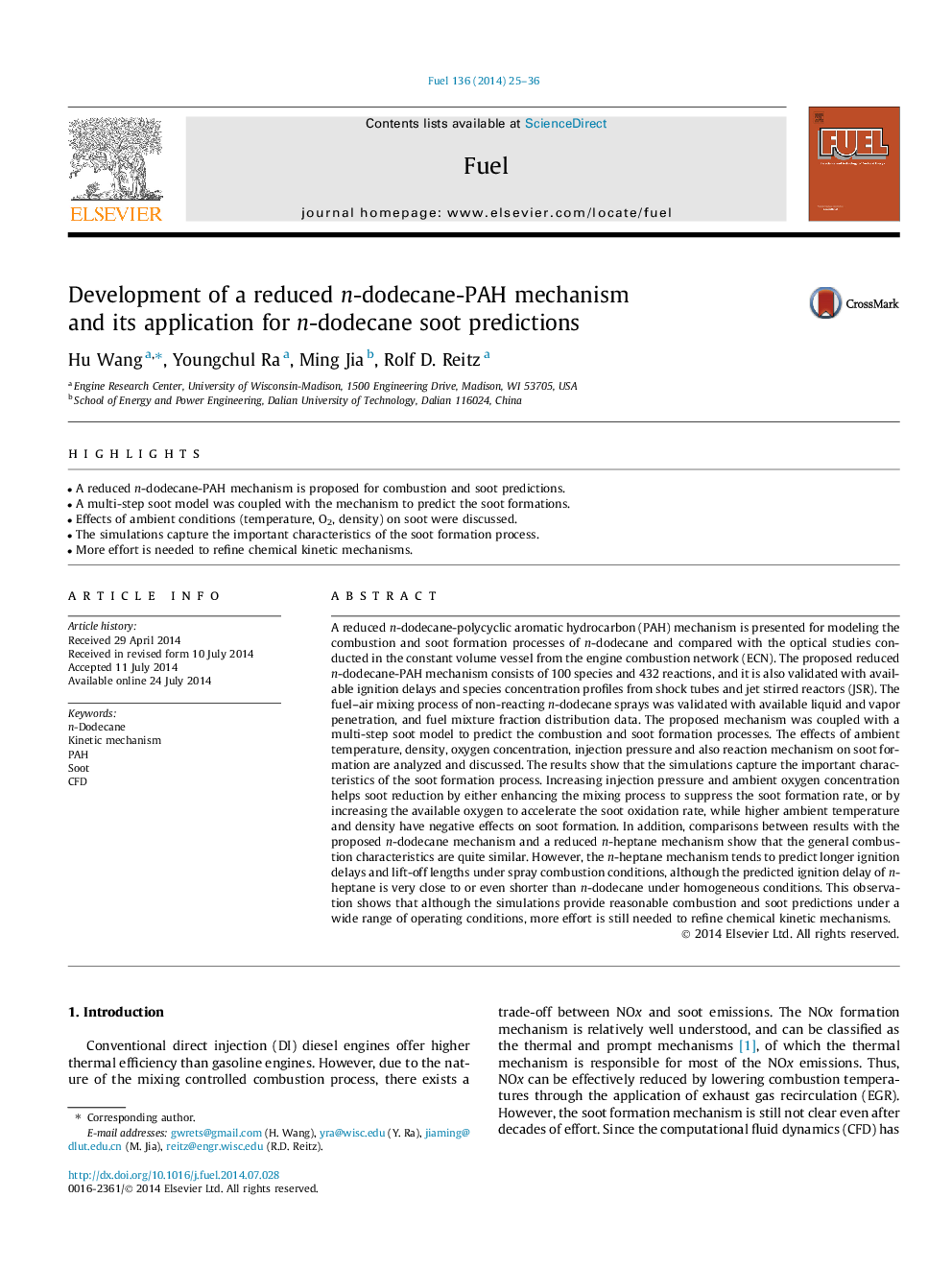| Article ID | Journal | Published Year | Pages | File Type |
|---|---|---|---|---|
| 206071 | Fuel | 2014 | 12 Pages |
•A reduced n-dodecane-PAH mechanism is proposed for combustion and soot predictions.•A multi-step soot model was coupled with the mechanism to predict the soot formations.•Effects of ambient conditions (temperature, O2, density) on soot were discussed.•The simulations capture the important characteristics of the soot formation process.•More effort is needed to refine chemical kinetic mechanisms.
A reduced n-dodecane-polycyclic aromatic hydrocarbon (PAH) mechanism is presented for modeling the combustion and soot formation processes of n-dodecane and compared with the optical studies conducted in the constant volume vessel from the engine combustion network (ECN). The proposed reduced n-dodecane-PAH mechanism consists of 100 species and 432 reactions, and it is also validated with available ignition delays and species concentration profiles from shock tubes and jet stirred reactors (JSR). The fuel–air mixing process of non-reacting n-dodecane sprays was validated with available liquid and vapor penetration, and fuel mixture fraction distribution data. The proposed mechanism was coupled with a multi-step soot model to predict the combustion and soot formation processes. The effects of ambient temperature, density, oxygen concentration, injection pressure and also reaction mechanism on soot formation are analyzed and discussed. The results show that the simulations capture the important characteristics of the soot formation process. Increasing injection pressure and ambient oxygen concentration helps soot reduction by either enhancing the mixing process to suppress the soot formation rate, or by increasing the available oxygen to accelerate the soot oxidation rate, while higher ambient temperature and density have negative effects on soot formation. In addition, comparisons between results with the proposed n-dodecane mechanism and a reduced n-heptane mechanism show that the general combustion characteristics are quite similar. However, the n-heptane mechanism tends to predict longer ignition delays and lift-off lengths under spray combustion conditions, although the predicted ignition delay of n-heptane is very close to or even shorter than n-dodecane under homogeneous conditions. This observation shows that although the simulations provide reasonable combustion and soot predictions under a wide range of operating conditions, more effort is still needed to refine chemical kinetic mechanisms.
